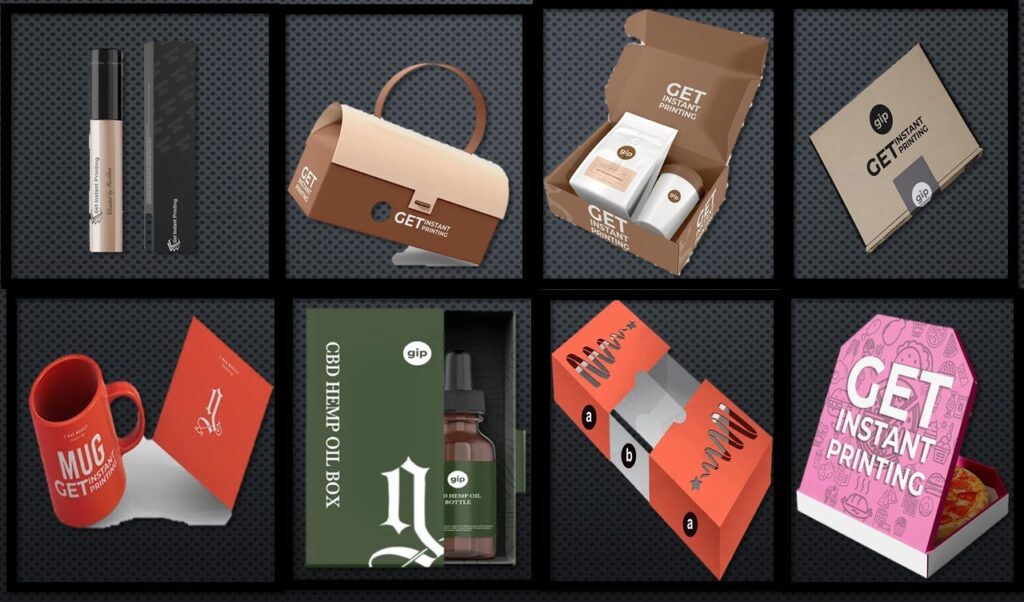In the highly competitive world of retail, e-commerce, and product branding, packaging is no longer just about protecting a product — it’s a key player in marketing, customer experience, and brand identity. Whether you’re a startup launching your first product or a large enterprise exploring new ways to impress customers, the question remains: Should you use custom boxes or stick with standard packaging? Custom Boxes vs. Standard Packaging: Which Is Better?
Both options have their advantages and drawbacks, and choosing the right one can significantly impact your bottom line, customer satisfaction, and brand reputation. In this article, we’ll explore the key differences, benefits, and trade-offs between custom boxes and standard packaging, helping you determine the best fit for your business.
What Are Custom Boxes?
Custom boxes are packaging solutions specifically designed and manufactured to fit your product’s dimensions, branding, and unique requirements. These boxes are tailored in terms of size, shape, color, material, and printing to align with a brand’s identity and product specifications.
Common Features of Custom Boxes:
-
Custom dimensions to fit your product perfectly.
-
Unique designs that match your brand.
-
Printed logos, graphics, or messages.
-
Special materials for enhanced durability or eco-friendliness.
-
Finishing options like embossing, foiling, or spot UV.
What Is Standard Packaging?
Standard packaging refers to pre-made, off-the-shelf boxes and containers. These packaging options typically come in generic sizes and materials and are used across industries due to their availability and affordability.
Common Features of Standard Packaging:
-
Available in predefined sizes and shapes.
-
Generally unbranded or plain in design.
-
Made from basic materials like cardboard or corrugated fiberboard.
-
Easily sourced from packaging suppliers or wholesalers.
Custom Boxes: Advantages and Disadvantages
Advantages of Custom Boxes
-
Brand Identity and Recognition
Custom packaging provides an excellent opportunity to reinforce your brand. Your packaging is often the first physical touchpoint customers have with your product. A well-designed custom box makes your product memorable and shareable — particularly important in the age of unboxing videos and social media. -
Better Product Protection
Tailored packaging fits your product snugly, reducing movement during transit and minimizing the risk of damage. This is especially important for fragile, perishable, or high-value items. -
Enhanced Customer Experience
Aesthetic and well-thought-out packaging creates a premium unboxing experience, increasing customer satisfaction and perceived value. -
Marketing and Storytelling
You can use the packaging space to tell your brand story, share important information, or even insert QR codes for promotions. This elevates your brand from transactional to experiential. -
Eco-Friendly Options
Custom boxes can be made with sustainability in mind — using biodegradable or recyclable materials and minimizing waste by reducing excess packaging.
Disadvantages of Custom Boxes
-
Higher Costs
Custom packaging is typically more expensive due to the design, materials, and production involved. This can be a burden for startups or small businesses with limited budgets. -
Longer Lead Times
Customization takes time. From design to manufacturing, the process can take several weeks — not ideal for businesses that need fast turnaround. -
Minimum Order Quantities (MOQs)
Many suppliers require businesses to order in bulk to justify the cost of customization, which may not be feasible for low-volume sellers.
Standard Packaging: Advantages and Disadvantages
Advantages of Standard Packaging
-
Cost-Effective
Because standard packaging is mass-produced, it’s much cheaper than custom alternatives. This is ideal for businesses looking to reduce operational expenses. -
Readily Available
Standard boxes are easy to find and buy in bulk. You can typically receive orders quickly, which is crucial for businesses with tight timelines. -
Simplicity and Convenience
For products that don’t require elaborate protection or branding, standard boxes get the job done with minimal fuss. -
Low MOQs
You can often purchase standard packaging in small quantities, allowing more flexibility for testing products or fulfilling smaller orders.
Disadvantages of Standard Packaging
-
Lack of Branding
Plain packaging offers little opportunity for visual branding or storytelling, making it harder to stand out from competitors. -
One-Size-Fits-All Isn’t Always Ideal
Generic sizes might not fit your product properly, leading to excess movement, the need for more fillers, and a higher chance of damage during shipping. -
Missed Marketing Opportunity
Every box that leaves your warehouse is a chance to advertise your brand. Standard packaging doesn’t capitalize on this potential.
Which One Is Better?
The answer to this question isn’t as simple as declaring a winner. The right choice depends on several factors, including:
1. Your Business Stage
-
Startup or Small Business: If you’re just starting, cost-efficiency may be a priority. Standard packaging allows you to keep expenses low while you build your brand.
-
Established Brand: If you already have a strong market presence, custom boxes can enhance your brand further and offer a more luxurious experience to your customers.
2. Product Type
-
Fragile or Luxury Items: Custom packaging is better for delicate or premium products that require extra care or a high-end presentation.
-
Basic or Bulk Items: Standard packaging is sufficient for non-fragile, low-cost, or bulk items where presentation isn’t a top priority.
3. Customer Expectations
In industries like cosmetics, fashion, or electronics, customers expect high-quality packaging. In contrast, utility-based industries (like hardware or bulk food supply) can often get by with standard packaging.
4. Marketing Strategy
If you rely heavily on digital marketing and social media, investing in custom packaging can pay off through user-generated content and word-of-mouth referrals.
5. Sustainability Goals
Custom packaging gives you more control over materials and design, allowing you to create environmentally friendly solutions tailored to your goals.
The Hybrid Approach: Best of Both Worlds?
Many businesses are now taking a hybrid approach to packaging — using standard packaging for certain product lines or B2B shipments, and custom boxes for direct-to-consumer (DTC) orders or premium product tiers. This offers flexibility in budgeting while still allowing space for creativity and brand development where it matters most.
For example:
-
Use standard corrugated boxes with branded stickers or tape to create a semi-custom look at a lower cost.
-
Reserve full custom boxes for high-end products, subscription boxes, or first-time customer deliveries to create a lasting impression.
Final Verdict
When comparing custom boxes vs. standard packaging, there is no one-size-fits-all answer. Here’s a quick summary:
| Factor | Custom Boxes | Standard Packaging |
|---|---|---|
| Cost | Higher | Lower |
| Branding | Excellent | Poor |
| Protection | Tailored | Generic |
| Lead Time | Longer | Shorter |
| Marketing Impact | High | Low |
| Flexibility in Order Size | Limited | High |
| Customer Experience | Premium | Basic |
Ultimately, custom boxes are an investment in your brand and customer experience, while standard packaging is a tool for practicality and efficiency. The ideal strategy may be a thoughtful mix of both, tailored to your business needs, product type, and marketing goals.
Conclusion
Your packaging decision is more than just a logistical one — it’s a reflection of your brand’s values, goals, and customer promise. Whether you choose custom boxes, standard packaging, or a combination of both, make sure your choice aligns with the overall customer journey and brand story you’re aiming to tell.
After all, in today’s saturated market, the box your product comes in might just be what makes your brand unforgettable.


